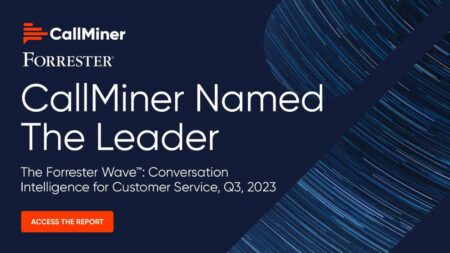 A Forrester study, Top research for CIOs: The future of work, predicts that by 2030, automation, robotics and artificial intelligence will have resulted in 80% of jobs being transformed. At Forrester, we also know that 29% of jobs will be cannibalised and that new jobs created will amount to at least 13%.
A Forrester study, Top research for CIOs: The future of work, predicts that by 2030, automation, robotics and artificial intelligence will have resulted in 80% of jobs being transformed. At Forrester, we also know that 29% of jobs will be cannibalised and that new jobs created will amount to at least 13%.
What’s worrying is that most C-level technology and business leaders haven’t yet mastered new technologies or change management. They’re often uncertain of how to shape their organisation’s workforce strategy for the future.
A related study, The adaptive workforce will drive the future of work, has shown that employees have little confidence that their leaders are able to transition the workforce to the new world of automation, AI and robotics. Only 18% say they have a clear understanding of their career path in the world of automation.
“The future of work isn’t something that happens to you — it’s something you create,” writes Forrester vice president and principal analyst serving CIO professionals, JP Gownder, in the Adaptive Workforce study.
Getting ahead of the shift
This topic is top of mind for most South Africans today, with the high youth unemployment and the lack of “future-fit” skills and training for the fourth Industrial Revolution. The future of work is more than just a new buzzword — the effects will be far-reaching and pervasive. CIOs can play a transformative role in shaping the future of work since they are on the forefront of developing technology.
So, how can customers, employees, leaders and robots be brought together to build a constantly realigning workforce, capable of driving business growth and success?
Forrester believes it requires a combination of technology and culture building. In the Future of Work study, Forrester VP research director serving CIOs, Pascal Matzke, writes that by building a foundation with the right talent, skills and culture, companies will start developing the agility they need. This will help organisations quickly pivot toward a new business model, reimagine their future customers, and break free of incremental growth along a narrowing customer experience (CX) curve.
By bringing together automation, employee experience (EX) and robotics quotient (RQ), CIOs can prepare their companies for an environment of continuous change, writes Matzke. The RQ measures how ready your employees, leaders and organisation are to deliver value from AI, automation, robotics and blockchain.
Effective leaders are those that are able to:
- Anticipate tomorrow’s customer and employee needs;
- Link the need to create great CX with leveraging superior EX;
- Leverage advances in technology to rapidly pivot business goals.
Automating to meet higher expectations
Customers’ expectations are rapidly evolving and across all age groups they’re becoming increasingly open to experiment and widen their choices. AI and robotic process automation can be leveraged to help employees better meet these customer expectations.
This also means managing both the inevitable rise in the presence of robots, with an increased focus on EX, which can often be at odds with one another.
Tech-driven innovation necessity
Technology-driven innovation is “an advanced discipline of rapid technology experimentation to unleash disruptive change”, writes Gownder. The fastest growing companies are using this to turn their markets on their heads, growing at 3.2 times their industry average, while those who are only still beginning have shrinking revenues.
However, Gownder cautions that explosive business growth does not result from only incremental innovation. “Most brands offer the same experiences as their competitors because they answer the same customer needs using the same approaches.” To really succeed, companies need to do something different, not just continue to invest more in the same IT.
Burstable, dynamic workforces
An adaptive workforce needs to be “burstable” (quickly scaling up or down). For example, enlisting highly skilled persons on short-term contracts to boost successful outcomes. Another option is creating “swarm teams” that come together to solve specific problems and then disband again. CIOs can achieve quality results by bringing together the best skill sets for a specific purpose, and at the same time contribute to building a corporate culture of adaptiveness.
Also grow your employees to be cross-functional across departments and define their job in terms of skills, rather than roles. This gives staff mobility and increased opportunities across the company, instead of remaining siloed in a traditional role, advises Gownder.
Mastering the future of work
For CIOs to stay relevant, focus needs to shift to helping companies grow revenue. IT workforces will need to evolve quickly to meet the demands of business. With its unique “outside-in” approach and focus on driving revenue and growth, the combined value of Forrester’s strategic capabilities and the operational capabilities of Sirius Decisions, which Forrester acquired last year, is helping clients change and grow in tumultuous times.
Recently completed research on 6 000 companies with more than US$1-billion in revenue showed that Forrester clients are 34% more profitable than the average large user corporation. Highly engaged Forrester clients are even 54% more profitable. Furthermore, companies that align marketing, sales and product in the Sirius Way grow 19% faster than average and they are 15% more profitable.
To learn more about the Future of Work, download this complimentary guide.
- Joan Osterloh is authorised Forrester Research partner for South Africa
- This promoted content was paid for by the party concerned




